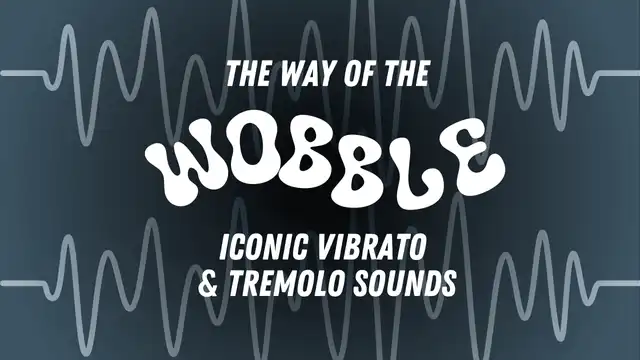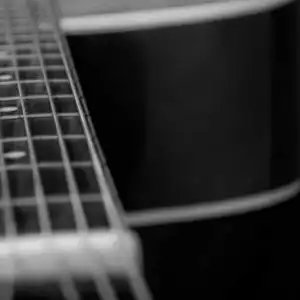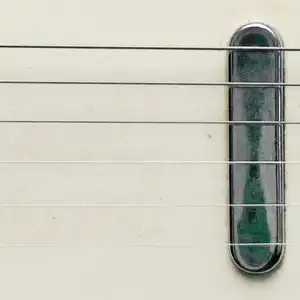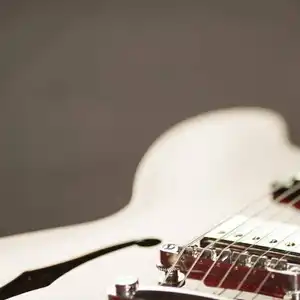The Way of the Wobble: Tremolo vs Vibrato Guitar Effects


When it comes to electric guitar effects, few terms are as often misunderstood as tremolo and vibrato. Ask a room full of guitarists what the difference is there's a good chance the best answer you'll get is "wait, you mean whammy?" While the terms tremolo and vibrato are frequently used interchangeably (even by major manufacturers), they refer to distinct phenomena that have shaped music for decades... centuries, even! Let’s untangle the mystery of tremolo and vibrato, explore their roots in classical music, and follow their electrifying journey through amps, guitars, and pedals.
Tremolo vs Vibrato: What’s the Difference?
In simplest terms:
- Tremolo refers to changes in volume. Think of it as your sound rising and falling in waves, creating a pulsing effect.
- Vibrato refers to changes in pitch. Imagine bending a note rapidly back and forth to give it a “wobbly” quality.
This distinction is easy to understand in the context of classical music. A violinist achieving tremolo will rapidly bow the string back and forth to create trembling dynamics, while vibrato involves oscillating the finger on the string to shift the pitch to varying degrees.
Confusion arises in the electric guitar world, largely because iconic companies used the terms incorrectly. For instance, the “tremolo arm” on a Fender Stratocaster doesn’t actually create tremolo—it’s a pitch-bending device, making it a vibrato arm. Similarly, Fender amps like the Vibrolux and Vibro Champ—despite their names—offer tremolo effects, not vibrato. While the terminology mix-up is now firmly cemented in guitar lore, understanding the difference is key to appreciating their unique sonic qualities.

The Classical Connection: Old Roots, New Tricks
Both tremolo and vibrato have their roots in classical music. In the Baroque and Romantic periods, composers used these techniques to add emotion and expressiveness to performances. Tremolo brought drama to string sections, evoking tension or suspense, while vibrato added warmth and richness to individual notes, making melodies more engaging.
When the electric guitar entered the scene, players and engineers alike sought ways to mimic these expressive techniques electronically, translating centuries-old traditions into the electrified era. And thanks to some familiar trailblazers, it didn't take long for some iconic tremolo and vibrato tech to hit the scene.
Tremolo and Vibrato in Electric Guitar: A Brief History
Amp-Driven Effects
The earliest electric guitarists relied on amplifiers to produce effects, and tremolo was among the first to make waves. Leo Fender’s amplifiers in the 1950s and ‘60s were instrumental in bringing tremolo to the masses. Amps like the Fender Vibrolux, Vibro Champ, and Tremolux featured built-in tremolo circuits that modulated the volume of the signal, creating a mesmerizing pulsing effect. Guitarists embraced this as a way to add texture and rhythm to their playing.
Though less common, true vibrato circuits also found their way into some amps. Magnatone, for example, developed amplifiers with pitch-shifting vibrato that delivered a lush, watery sound unlike anything else. Artists like blues-rcok pioneer Lonnie Mack famously used Magnatone amps to create soulful, vocal-like tones that remain iconic to this day.

Guitar Hardware
Around the same time, inventors were tackling vibrato from a different angle: physical mechanisms attached to the guitar itself. Enter the Bigsby vibrato tailpiece, one of the first widely adopted solutions for pitch modulation. By pulling or releasing the arm, players could achieve subtle bends or dramatic dive bombs, perfect for surf rock, country, and rockabilly.
Leo Fender, never one to be outdone, introduced the synchronized tremolo system on the Stratocaster in 1954. While its name suggests tremolo, it’s actually a vibrato device. The design offered greater control and range than the Bigsby, helping guitarists like Hank Marvin, Jimi Hendrix, and Eric Clapton craft their signature sounds. Fender’s later offset models, such as the Jazzmaster and Jaguar, featured a different vibrato design, favored by surf rockers and indie musicians for its smooth, subtle action.
Another innovation came in the form of the Maestro Vibrola, a pitch-shifting device found on Gibson guitars like the SG. With its elegant, swooping arm and expressive capabilities, it gave players yet another way to bend notes and chords to their will. And of course, later on came the arrival of the now ubiquitous Floyd Rose, a favorite amongst players interested in pulling off the most extreme divebombs possible.
Pedal Power
By the 1960s and ‘70s, the effects pedal revolution was in full swing, and both tremolo and vibrato found new life in stompbox form. The Uni-Vibe, while technically a phaser, produced a vibrato-like effect that became synonymous with Jimi Hendrix and David Gilmour. True tremolo and vibrato pedals followed, offering players portable, versatile options for crafting their tone.
Today, tremolo and vibrato pedals come in all shapes and sizes, from analog classics to digital marvels. Whether you’re chasing vintage warmth or futuristic precision, there’s a pedal out there to suit your needs.

The Top Five Tremolo and Vibrato Devices of All Time
Whether amp-based, hardware-based, or pedal-based, these five devices have stood the test of time as favorites among guitarists:
- Fender Vibro Champ - This 5-watt wonder packs a punch, with its rich, pulsing tremolo effect beloved by studio musicians and bedroom players alike. Its simplicity and warm tube tone make it a classic.
- Bigsby B5 Vibrato Tailpiece - The Bigsby remains a go-to for players seeking smooth, expressive vibrato. Its timeless design and versatility have made it a staple on everything from Gretsch hollow bodies to Telecasters.
- Magnatone 280 - Known for its pitch-shifting vibrato, the Magnatone 280 creates an otherworldly sound that’s equal parts haunting and beautiful. Vintage models are rare and highly sought after.
- Strymon Flint - This modern marvel uses digital emulation to combine lush tremolo with gorgeous spring reverb, offering a one-stop shop for vintage-inspired tones. Its three tremolo modes (including harmonic tremolo) make it incredibly versatile.
- Boss VB-2W Vibrato - Originally released in the 1980s and resurrected in Waza Craft form, the VB-2W delivers authentic pitch vibrato with a unique rise time feature that ramps up the effect for dynamic swells.
Wrapping It Up
Tremolo and vibrato may have classical roots, but one could argue that today they belong to the world of electric guitar. From the earliest amp circuits to state-of-the-art pedals, these effects continue to inspire musicians, adding depth, texture, and emotion to their music. Whether you’re a fan of the gentle shimmer of a Fender Vibro Champ, the warbly wobble of a Bigsby, or the two-in-one emulation of a digital pedal, there’s no denying the enduring appeal of these sonic tools.
So next time someone confuses tremolo with vibrato, you can set the record straight—and maybe show off a few awesome sounds while you’re at it.
Other Posts you may like

Guitar Strings Order: How the Guitar is Tuned and Why

Two Handed Tapping: Our Top 8 Tappers of All Time

Which Guitar Strings Wear Your Fret Wire Down More?

What is Nashville Tuning? Its History, Best Guitar Strings & Uses

Guitar Scale Length Explained: String Tension & Playability

What Guitar Strings I Used To Play...
0 Responses
Leave a Reply
Your email address will not be published. Required fields are marked *

